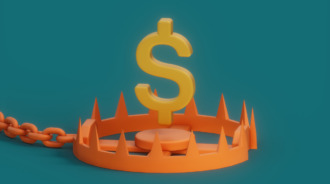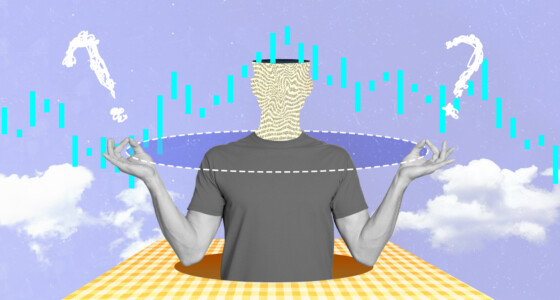

There comes a time, where traders reach a point where there’s so much information available to them that it becomes overwhelming. When you start to doubt your strategies, you begin losing your edge and making bad trades.
This is especially dangerous as the losses mount up and the fear of losing even more money damages your psychological strength. If this sounds like you, keep reading for some practical solutions to stop overthinking and start trading.
Your trading plan
A well-thought-out trading plan is the key to stopping overthinking. Everything else is secondary. Think of your plan as a set of instructions tailored to you that tells you whether to trade or not. If it’s not in your plan, stay out of the trade.
Your goal with a trading plan is to make it as specific as possible, removing any potential ambiguity. It needs to include everything, like entry/exit criteria, risk management rules, and daily habits. You’ll ideally have your list of setups that you’re good at identifying and trading, and the rules for entering them.
For example, if you know you’re good at trading trendlines, you could say you’ll only look to trade them when a trendline on the hourly chart meets an area of daily support, with a stop below support and a profit target at the next area of resistance. No more overthinking – just condition-based trading.
It’s also just as important to stick to your plan and revise it regularly as you become a better trader. It won’t take long for the rules you set to become habitual, putting you above everyone else trading on emotion.
Trade what you see
Too often, beginner traders will use various indicators and timeframes that convince them that x will happen. This is counter-productive. Instead, trading based on price action and market structure is crucial.
For example, let’s say an area of previously-strong support has been broken through with a massive red candle that’s closed quite significantly below. RSI says it’s oversold; MACD is indicating a reversal. But what happened? Not only is the price putting in a lower low, but it’s also showing there’s a flood of sellers in the market. Why would it suddenly reverse? Sure, there might be a pullback, but the probability of price suddenly soaring to new highs has now decreased dramatically.
By actually looking at what the candles and the market structure (uptrends, ranges, and downtrends) are telling you, you can set a bias that will guide your trades in the right direction and prevent overthinking.
You also need to remember that higher timeframe trends take precedence; if price has been in a downtrend for the past month, it’s probable that the highs and lows it puts in won’t be broken to suddenly form an uptrend, even if there’s an uptrend on a lower timeframe.

Avoid the news
News is usually too volatile to trade on, often rocketing in one direction before reversing completely. You’ll end up second-guessing yourself and swapping between buying and selling as you try to take in the abundance of factors: price action, fundamentals, sentiment, etc.
It’ll set you on a course of overanalyzing and eventually wasting your capital as you try to predict the market. The best way to counteract this is to simply be aware of news releases and avoid trading them.
Control your emotions
Lastly, be disciplined with your emotions. When you recognize fear in your decision-making, walk away from the screen. Seriously, take a break. When you are fearful, you become averse to risk. You start analyzing every small detail and fall into the analysis-paralysis trap, eventually leading to poor decision-making.
Instead, recognize that the market is always ripe with opportunities. If you’re letting emotions factor into your decision, take a walk or hang out with friends and forget about it. The market will always be there tomorrow, ready for a fresh perspective.








